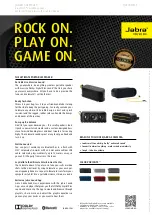
STANDARD USER MANUAL n° #0020-3
SMU#0020-03
Page 9/25
CHAPTER 4.
INSTALLATION AND OPERATION
4.1.
R
ECEIPT OF
I
NSTRUMENT AND CHECK
Each instrument is inspected and packaged prior to transport with great attention. Immediately after
receipt, we recommend to perform a quick visual inspection of the package. If the package is damaged,
report it in writing to the carrier at the time of delivery.
The HYDROXYCHROM is packed in a wood box with protection and maintaining foams placed above and
below the instrument.
The HYDROXYCHROM packaging extraction begins with the opening of the wood box; at this stage, it is
possible to verify the visual integrity of the instrument.
Any damages must be immediately identified and photographed; it should be reported to the carrier as
well as to your local Distributor or to CHROMATOTEC.
For major damages, the HYDROXYCHROM shall be returned to the manufacturer after synchronization with
the service department, which can be reached by e-mail at:
In case of non-respect of this procedure, CHROMATOTEC cannot be kept in charge of the caused damage
and cost will be charged to the customer.
It is well recommended to keep the wood box for future shipments.
4.2.
D
ELIVERY
C
ONTENT
Quantity
Description
1
Hydrogen Generator HYDROXYCHROM with its factory communication option assembled
1
Connection tube from ZEROWATER tank to HYDROXYCHROM.
1
ZEROWATER tank (5L)
1
USB key including operating manual and
HYDROXYCHROM Viewer
software. If the generator is
supplied with an analyzer, these elements are supplied with the USB key of the analyzer.
1
QC and verification certificate
1
USB cable for connecting the device to a PC
1
Power cable 230V, CE or according to your country
1
Shipping box
4.3.
G
ENERATOR INSTALLATION
The HYDROXYCHROM generator must be installed on a flat surface, without vibrations, avoiding
potential shocks and excessive heat source; it should not be in contact with other devices on any of
its walls.
Operate the instrument in an open and well-ventilated area, in which the temperature does not go
below +4°C. Good functioning of the instrument is guaranteed for a temperature b10 and
+35°C.
To ensure proper ventilation, a clear space of at least 5 cm is required on the top of the
instrument and around the ventilation outlet. The cooling air intake is located directly on the top
and the rear of the instrument; under no circumstances this part should be obstructed.










































